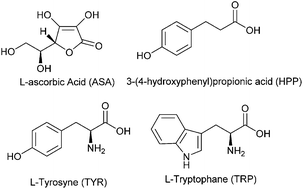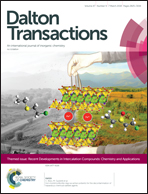Dual chain extension effect and antibacterial properties of biomolecules interleaved within LDH dispersed into PBS by in situ polymerization†
Abstract
Nanocomposites based on poly(butylene succinate) (PBS) and hydrotalcite-type anionic clays (HTs) organo-modified with biomolecules characterized by antibacterial and/or antioxidant activities, such as L-ascorbic acid (ASA), phloretic acid (HPP), L-tyrosine (TYR) and L-tryptophan (TRP), have been prepared by in situ polymerization. From XRD analysis and rheology experiments in a molten polymer state, intercalated HT hybrid platelets acting here as a hybrid filler are found to be well dispersed into polymers while providing a chain extension effect on PBS. Moreover, the molecules, when hosted within a HT interlayer gap, do preserve their pristine antibacterial activity, both in HT and in the resulting PBS composites. In particular, under the experimental conditions tested, HT/ASA and HT/TYR present the best combination of both properties (chain extension effect and antibacterial), especially versus E. coli as high as 90 and 97% of inhibition, respectively, using 2.5 wt% hybrid filler only. These findings open future applications for PBS associated with the hybrid HT filler as multifunctional materials in active packaging applications.

- This article is part of the themed collection: Recent Developments in Intercalation Compounds: Chemistry and Applications


 Please wait while we load your content...
Please wait while we load your content...